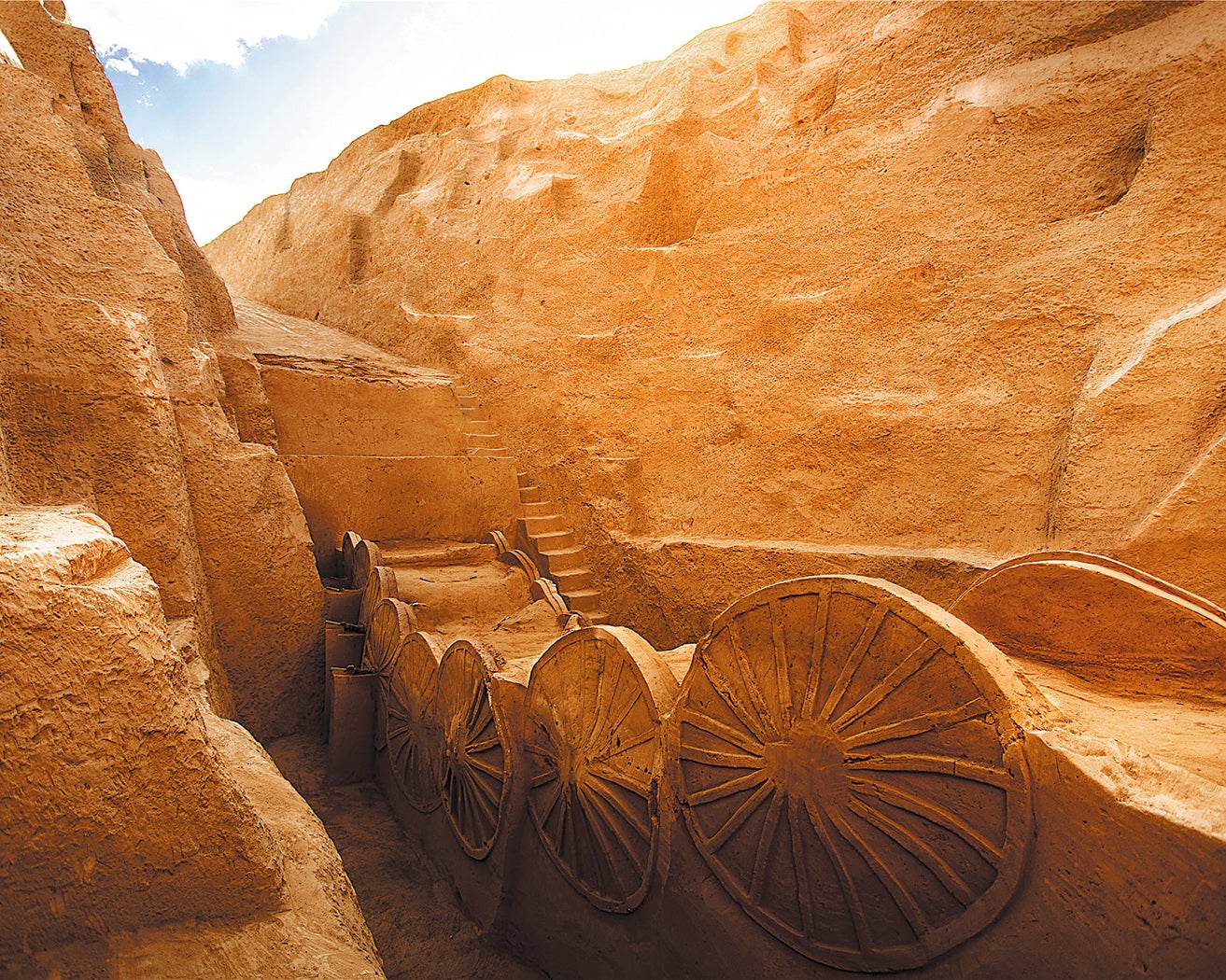Archaeologists shed more light on China’s past
THE ARTICLES ON THESE PAGES ARE PRODUCED BY CHINA DAILY, WHICH TAKES SOLE RESPONSIBILITY FOR THE CONTENTS

Incredible efforts made by Chinese archaeologists last year have filled many gaps in knowledge about the origin of human beings and the formation of the Chinese civilisation. This was evident from the list of China’s top 10 archaeological discoveries last year, which was recently announced by the National Cultural Heritage Administration in Beijing.
The top 10 discoveries were chosen from among 22 finalists out of more than 1,600 archaeological projects carried out last year through open ballot by 21 of China’s top-tier experts from archaeological institutes and universities.
Half of the finalists are prehistoric sites, said Wang Wei, director of the Chinese Academy of Social Sciences’ Academic Division of History, who is also one of the judges.
The Paleolithic Bashan site in Yishui county, Shandong province, stands out as it showcases the consecutive development history of people and their culture in the area from some 10,000 to 100,000 years ago.
An influential hypothesis suggests Homo sapiens originated in Africa. An important reference for it is that evidence of human activity from 50,000 to 100,000 years ago had not been found in East Asia before.
“The Bashan site group fills in the blank and thus plays a key role in East Asia’s Paleolithic archaeological studies,” said Wang Youping, a professor at Peking University.
The Neolithic Keqiutou site complex dating back 3,000 to 7,500 years in Pingtan county, Fujian province, offers key clues for tracing people’s economic forms in what is now China’s southeast coast and the spread of Austronesian peoples across the Pacific Ocean.
“They not only relied on fishing, but also farming for a living. The project enriches understanding of how prehistoric people utilised marine resources and prehistoric agriculture,” said Chen Xingcan, head of Institute of Archaeology at Chinese Academy of Social Sciences.
The Qujialing Neolithic site dating back 4,200 to 5,900 years in Jingmen, Hubei province, which is by the Yangtze River, sheds light on the wisdom of ancient people, as archaeologists have found one of the earliest and clearest water-management systems which can resist droughts and floods and provide water for irrigation and daily use.
“The site shows prehistoric people’s water management idea changed from passively preventing flooding to actively controlling water, realising a stride from adapting to nature to transforming it,” said Zhao Hui, a professor at Peking University.
“From the projects we find that excavations and studies on the origin of civilisation in different areas have got unprecedented attention,” said Wang Wei.
The Mopanshan site dating back 6,000 years in Langxi county, Anhui province, also indicates how civilisations got complicated by the Yangtze.
Some finds revolutionised people’s understanding of the Shang Dynasty (c.16th-11th century BC).
The Shuyuanjie burial site in the early Shang capital in Zhengzhou, Henan province, is a long-anticipated discovery because archaeologists have always hoped to find a high-level cemetery since archaeological efforts started in the 1950s but failed to achieve a breakthrough till now.
A great number of bronze artefacts have been unearthed from this cemetery, covering nearly all types of their counterparts discovered at Yinxu Ruins, a late Shang capital in Anyang, Henan province.
“This means the bronzeware ritual system had developed in the early Shang stage,” said Wang Wei.
The Zhaigou site in Qingjian county, Shaanxi province, has yielded information on tombs of heads of Shang vassal states.
“The tombs can be compared with some of Shang kings’ tombs in Yinxu Ruins in their scale. They will help us understand the relationship between Shang Dynasty and the vassal states,” said Chen of the Chinese Academy of Social Sciences.
Some other projects unveil ancient products and trade. Efforts on the Chencun Ceramic Kiln site in Huozhou, Shanxi province, unveil the development of Huozhou kilns, a historically recorded kiln group but less known by people now.
Studies on the Northwest Continental Slope No 1 and No 2 Shipwrecks found at a depth of 4,920 feet in the South China Sea show the prosperous commercial and cultural exchanges along the ancient Maritime Silk Road in the middle of the Ming Dynasty (1368-1644).
“They symbolise China’s underwater archaeology has reached the deep sea and help us understand the marine civilisation in China,” said Song Jianzhong, a researcher at the National Centre for Archaeology.
Subscribe to Independent Premium to bookmark this article
Want to bookmark your favourite articles and stories to read or reference later? Start your Independent Premium subscription today.